Analyzing Girls’ Access to Education in Afghanistan: A Tale of Gender Disparity
Mallory Walton
Introduction
Since western forces toppled the Taliban regime in Afghanistan as a result of “Operation Enduring Freedom,” a lot of credit has been claimed by the West for building educational infrastructure and increasing the number of girls enrolled in school. Education is a vital part of any functioning state as it is the cornerstone of both social and economic development, creating political stability, improving health, producing higher wages and economic growth, and promoting democracy. For girls, and women in particular, education can be a source of empowerment and they can serve as a catalyst for societies emerging after decades of civil unrest. Education for women in a region of the world that has oppressed females for decades, even centuries, is consequential to the development and modernization of Afghanistan.
According to the United Nations Development Program, Afghanistan has been among the worst offenders of gender inequality for the past several decades (UNDP014). A variety of factors are associated with a poor education condition in Afghanistan including decades of conflict, frequent international intervention, and the destruction of necessary school infrastructure. The United States’ invasion of Afghanistan was expected to improve human rights and female education in Afghanistan, as their main objective was to take out Taliban forces while also liberating the Afghani people. I analyze the quality of education pre- and post-Taliban period and ask: has the involvement of foreign powers improved (or deteriorated) female education in Afghanistan?
The Islamic Republic of Afghanistan is a complex state in which to examine gender roles, and more specifically, the education of the female population, as they are deeply rooted in the religious and historical culture. Gender continues to be a source of discussion in Afghanistan after years of women being denied an education under the Taliban rule and the liberation claims the United States and other forces made before invading, the education sector of Afghanistan has surely suffered over the last thirty years. With the collaboration of international donors and the Afghanistan government, USAID has “built more than 13,000 schools, recruited and trained more than 186,000 teachers, and increased net enrollment rates for school-aged children past 56 percent” (USAID). With feats like this being claimed, it is important to investigate whether the United States through USAID along with other international donors are truly the reason for the improvement of education for females in Afghanistan over the past decade. Perhaps an even more surprising feat is that according to a 2013 Survey of the Afghan People by the Asia Foundation, 72 percent of Afghans are “satisfied with the availability of education for children” (USAID).
Why should a person care about the status of female education? Gender inequality is at the forefront of news and policy changes around the world. Education is critical to a developing country; it improves health, produces higher wages and economic growth, and finally, it promotes democracy and political stability. When a population is educated, they are better equipped to prevent disease, use health care effectively, are more knowledgeable on the dangers of many diseases, including the importance of practicing safe sex, and it is a fact that educated mothers give birth to healthier children. With each additional year of schooling, it is estimated that a person’s income will be about 10% higher, thus generating more money into the economy of the country and the world (USAID). The most economically successful countries of the world have overall literacy rates greater than 40% (USAID). Finally, education fosters growth in civil society and allows citizens to have the tools necessary to understand their basic rights and to strengthen the skills they need in order to exercise them.
Education of both men and women is a necessary part of building healthy communities around the world, but in some countries, women are often neglected due to cultural and religious reasons. According to UNICEF (2012) women with six years or more of education are more likely to seek prenatal care, assisted childbirth, and postnatal care, reducing the overall rates of maternal and child mortality rates. Women who are educated are over 50 percent more likely to immunize their children than mothers without schooling. Education can act as a means of empowerment to women and gives them the power to make choices in order to live the life that they want. The Convention on the Rights of the Child, a United Nations resolution that was put into force in 1990 actually establishes education, to both men and women, as a basic human right.
The education of females in Afghanistan is crucial to the development of the country. Many scholars refer to Afghanistan as a failed state, and as the statistics display, an educated society leads to the development of a nation, a necessity for Afghanistan at this point. Without the means for development to occur in Afghanistan, it will never regroup and will keep being categorized as a failed state because it does not possess the resources – an educated population – to further the nation as a whole. In order to provide the oppressed women of Afghanistan with a voice, I attempt to highlight and bring importance to foreign involvement in Afghanistan and how it has made an impact on the Afghan society.
Review of Relevant Literature
Brief History of Education in Afghanistan
History displays a tale of intense gender disparity when it comes to education in Afghanistan. This atrocity has been ubiquitous for many centuries, but with the fairly recent involvement of the United States and other western powers in the region, some changes have been made to the education sector of Afghanistan. For thousands of years, Afghanistan has been a key player in South Asia, both because it boasts a massive geographical area larger than that of France and because of its population, which, according to the latest estimate is just over 32.5 million (Central Intelligence Agency, 2015). Afghanistan has been subject to countless invasions by Russia, Europeans, and now, the United States, all pushing their own education systems onto the country. Afghanistan has a very violent history of being dominated by foreign conquerors such as Darius I of Babylonia in 500 B.C., Mahmud of Ghazni in the 11th century, and more recently, the British who tried to annex the state in the 1800s, giving way to internal strife (Tanner, 2003).
Implementation of the modernization of the education system has been on Afghanistan’s agenda since 1933 under Zahir Shah (Mortensen, 2010). Unfortunately, Zahir Shah’s education modernization attempts were met with difficulty because of the lack of teacher supply (Benjamin, 2011). Zahir Shah was the last monarch that ruled Afghanistan until the Soviets invaded in 1978, after which, a Soviet-installed communist regime maintained control until 1992. But even after Zahir Shah, his agenda to make the education of women a priority was still highly regarded.
Under the communist rule from 1979 to 1992, emphasis was placed on women and girls to get educated through literacy programs and national educational programs (Centner, 2012). During this time, the struggle between an educated female population and maintaining religious and traditional beliefs was great, and even contradictory at times (Pourzand, 1999). It was during this time that the government was implementing other human development policies, including debt forgiveness of peasants, land redistribution, and major changes to the fundamentals of marriage, making this an incredibly transformative period in Afghanistan’s history (Moghadam, 1992). At its height, the communist regime managed to employ massive amounts of women in every single field of administration, ranging from police forces to judges. It was estimated that at one point, almost half of Afghanistan’s civil servants, doctors, and teachers were female (Yazdi, 2008). Sadly, the policy changes put in place during this time did not sit well with the number of tribal groups in the region as they felt that their traditions and cultural customs were being oppressed, leading to a broad opposition to such new education policies. As opposition rose, the Soviet Union intervened by invading Afghanistan through a series of factional and tribal wars that had a devastating effect on Afghanistan. The Soviets brought considerable damage to infrastructure and forced millions to flee their homes and seek refuge in Pakistan and Iran. Because of these events, instability in Afghanistan was at an all-time high and the previous advancements for women in society were overlooked and thrown out (Samady, 2001).
The Soviet Union had substantial influence over Afghanistan prior to occupation in the late 1970s, making the United States, in particular the Reagan administration, nervous. Relations between the U.S. and Afghanistan were strained after the assassination of U.S. Ambassador Adolph “Spike” Dubs in 1979 in Kabul by Afghan forces, eventually leading the U.S. to end its bilateral assistance to the region. In order to counteract the Soviet Union’s influence in the region, the U.S. began providing monetary assistance to Islamist groups who were against the communist regime (Shirazi, 2008). In 1989, the Soviets withdrew from Afghanistan after which the communist regime was left in a weak state, allowing madrassah-educated Pashtun fundamentalists known as the Taliban to rise to power.
Before the total takeover of the Taliban, civil war broke out into what has now been known as the bloodiest and most damaging time in Afghanistan’s history (Farhoumand-Sims, 2007). Widespread destruction of neighborhoods and entire towns became normal during this time. It resulted in the deaths of tens of thousands of civilians, and the rape and kidnapping of thousands of women. Finally, the government collapsed and Afghanistan became a failed state. At this point on all spheres of the country: political, economic, and the infrastructure was badly damaged, if not completely destroyed (Alvi-Aziz, 2003). This excessive instability created a breeding ground for the Taliban movement, which was conceived in Islamic schools and Afghan refugee camps in Pakistan. Beginning as an initiative to end roadblocks and corruption, the movement escalated quickly with the promise of bringing an end to the violence on behalf of the Taliban.
The Plight of Education under the Taliban
The Taliban, funded by Saudi Arabia and Pakistan, promised to restore “the honor and dignity” of the women in the region and to eradicate corruption, all while abiding to and reinforcing Islamic laws (Cartalucci, 2014). The people of Afghanistan put their faith in the Taliban’s promises, but soon realized conditions under the Taliban would be much worse than the conditions under the communist regime. The Taliban’s first order of business was to fire all women from their jobs as doctors and civil servants, force them to wear burkas, and closed a great deal of girls’ schools in all major cities (Osborn, 2003). One of the most prominent goals of the Taliban was to rid Afghanistan of female education, and they were exceedingly successful at it.
While the Taliban were in control of Afghanistan beginning with the takeover of Kabul in 1996 for five years, women and girls were severely marginalized in all facets of Afghan society and the protection of human rights came to an abrupt halt (Roshan, 2004). Prior to the Taliban era, Afghan women were actively involved in education as both teachers and students. It was during this five-year period that women’s rights to education were retracted and that co-gender schools across the nation were turned into schools for boys only. In 1997, the Taliban set a nationwide ban on all public education for girls and women, but this did not mean females were not educated privately. The banning of public education for females outraged many members of the Afghan society so many set up private schools in homes to provide education to those who wanted it. This system of secret schooling only lasted momentarily until an edict stipulated, “privately funded education must be limited to girls under eight and restricted to the teachings of the Koran.” In order to set an example, the Taliban shut down over 100 private schools in Kabul to deter Afghans from seeking private education. Because of the harsh laws put in place and the heavy hand of the Taliban on the country, women’s literacy rates plummeted to one of the lowest in the world, thirteen percent in urban areas and four percent in rural areas. The education of women in Afghanistan was nearly wiped out by the Taliban over a five-year period, until increased foreign involvement came to the region (A Woman Among Warlords, 2007).
Education After the U.S. Invasion
On September 11, 2001 an attack backed by the Afghanistan-based terrorist group al Qaeda claimed the lives of thousands when two passenger jets flew into the World Trade Center in New York City, one crashed into the Pentagon, and another into a field in Pennsylvania, veered off-course from its target in Washington, D.C. The U.S. reacted almost quickly by sending troops to Afghanistan with the objective to eliminate al Qaeda and capture its leader, Osama bin Laden. The U.S. received much criticism for their swift move and even more criticism from the mass civilian casualties and damage that they were causing to Afghanistan’s infrastructure (Islam, 2007). The world watched as American-led forces overthrew the Taliban regime under Operation Enduring Freedom and further secured the safety of Afghanistan’s future (Kissane, 2012). After the U.S. triumphantly ousted the Taliban, the Bonn Agreement was signed, in which a transitional government was established with the original intent to have a “three-year phased process of political transformation” (International Crisis Group, 2003). The changes made to Afghanistan’s education sector were barely visible for the first couple of years, oftentimes leading scholars to make claims that western intervention had no effect, but when analyzing enrollment rates longitudinally, one can see the prolific rise in numbers.
Looking at the enrollment of women in schools in Afghanistan since 2002, just a short time after western powers invaded the country, enrollment had increased significantly (Haidari, 2011). Not only were the improvements to the education system visible in the rising enrollment rates, but the Afghanistan government, specifically the Ministry of Education had been going to great lengths in order to provide Afghani women with the resources it takes to become educated. Under the new constitution, education is listed as a right and has actually been implemented (Deo, 2014).
After the fall of the Taliban, educational rights to women were restored and the Afghanistan constitution set out standards in order to prevent the outlawing of female education from ever happening again. Articles 43 and 44 of the 2003 Afghanistan constitution state that education is the right of all citizens in Afghanistan, paid for by the government. The articles set out to create a compulsory intermediate level of education to every single citizen of Afghanistan while offering the teaching of native languages in places where they are spoken. The constitution specifically states that it will devise and implement effective programs to balance and promote female education and to attempt to eliminate illiteracy throughout the country. In addition to the articles of the constitution, the UN Millenium Development Goals, which were signed by Afghanistan, attempt to provide complete primary schooling and to erase gender disparity in primary and secondary schools (A Woman Among Warlords, 2007).
But although much work has been done to ensure women and girls have access to education, there remains the problem of safety. In a Human Rights Watch report, the dangers of attending school include possible attacks on the way to school and possible to shootings of teachers (Coursen-Neff, 2006). In fact, according to Afghan education officials in 2006, there was an average of one attack per school per day, a staggeringly high number. Scholars from around the world are calling on western powers like the United States and NATO to do more in providing safety to schoolchildren. One of the leading scholars in the area of female education in Afghanistan, Alvi-Aziz, suggests that there are a number of impediments that still stand in the way of females' education. Her list includes criminal acts, which includes warlordism amongst other behaviors, violence targeted specifically at women through rape, forced marriage, and murder, threats from Islamic extremists like the Taliban, terrorism targeting schools, unexploded ordnance (UXO), and the ethnic targeting of Pashtuns (Alvi-Aziz, 2008).
The existing literature on female education in Afghanistan is largely qualitative and assesses the situation based on the accounts of Afghan women. The findings in this area of research thus far indicate a decline in the quality of female education in Afghanistan since the United States invasion in 2001. However, studies systematically analyzing the impact of American invasion on female education in Afghanistan is limited. I provide an empirical analysis of the impact of external aggression on education in Afghanistan.
Theoretical Argument and Research Hypotheses
The main objective of this study is to analyze the impact of foreign involvement on girls’ access to education in Afghanistan. Zahir Shah was the first ruler of the country to introduce a modern education system in Afghanistan, emphasizing the concept that women are an integral part of society. This belief was maintained through the 1970s under the communist regime, but when the Taliban took control, the education of women was discouraged at first, and finally being banned completely. When the United States and North Atlantic Treaty Organization (NATO) forces invaded Afghanistan with a stated objective to root out the Taliban, it was also expected that the Afghan society as a whole would be liberated, restoring its steady progress toward modernization. One of the sectors that is expected to have benefited from the foreign invasion is education, specifically that of women. One way to measure foreign involvement is to look at the amount of foreign aid provided to Afghanistan. More specifically, I expect that female students’ enrollment in school would increase with an increase in foreign aid.
Foreign involvement to Afghanistan did not begin with the intention of restoring and rebuilding the education sector; rather, it began as an attempt to eradicate the Taliban and other terrorist organizations. Buildings were destroyed, infrastructure razed, bombs dropped, and civilian lives lost were all side effects to the foreign involvement in the nation. To build something up like an education system, the previous ineffective and flawed system must be torn down and replaced. The improvement of female education was a natural effect after the toppling of the Taliban regime by western forces. As soon as western forces ousted the Taliban regime, the international community started bolstering up its financial aid to help rebuild Afghanistan. Monetary assistance came from all over the world including Japan, Norway and Sweden. While the majority of the money was funneled in to improve the security sector, multilateral aid was also targeted at improving the social sector including education. Specifically, while the immediate objective of multilateral aid was to help the American War on Terror, donors such as Japan and Norway were motivated by the possibility of improving education in Afghanistan.
This leads to my first hypothesis:
H1: Female enrollment increases with an increase in bilateral aid.
In addition to the providing multilateral aid, individual countries were also involved in helping Afghanistan rebuild after the war. In order to achieve this objective, individual countries provided bilateral aid to Afghanistan. Several countries including the United States, the United Kingdom, Canada, Australia, Austria, Belgium, the Czech Republic, Denmark, the European Union, Finland, France, Germany, Greece, Iceland, Ireland, Italy, Japan, South Korea, Luxembourg, the Netherlands, New Zealand, Norway, Poland, Portugal, Slovakia, Slovenia, Spain, Sweden, and Switzerland provided bilateral aid to Afghanistan. Just as multilateral aid is likely to improve education in Afghanistan, I expect female enrollment to increase with an increase in bilateral aid.
This leads to my second hypothesis:
H2: Female enrollment increases with an increase in multiilateral aid.
Research Design
Dependent Variable:
For the purposes of this study, the dependent variable is primary and secondary school gross enrollment ratios. The gross enrollment ratio was developed by the United Nations and is “the number of children enrolled in a level (primary or secondary), regardless of age, divided by the population of the age group that officially corresponds to the same level” (UNICEF 2015)[i]. The dependent variable, GROSS ENROLLMENT, is a measure of the total number of female students enrolled in primary and secondary schools divided by the total population of that particular age group, expressed as a percentage. These data were collected from the UNESCO Institute for Statistics. I chose to use GROSS ENROLLMENT as my dependent variable because it is a complex measure that captures both the amount of females enrolled in primary and secondary school, but pairs it with the eligible population of females that can be enrolled in each.
Using a variety of secondary sources such as the World Bank, the UNESCO Institute for Statistics, the Organisation for Economic Cooperation and Development (OECD), the International Development Statistics (IDS), and the Education Policy and Data Center (EPDC), I draw several important indicators that serve as independent variables.
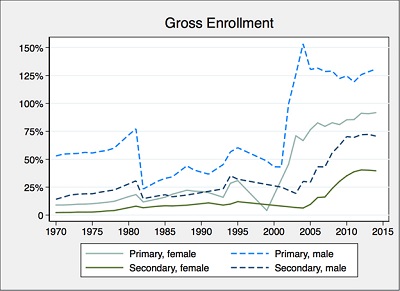
Figure 1: Gross Enrollment in Primary and Secondary School
Source: UNESCO Institute for Statistics
Using a variety of secondary sources like the World Bank, the UNESCO Institute for Statistics, the Organisation for Economic Cooperation and Development (OECD), the International Development Statistics (IDS), and the Education Policy and Data Center (EPDC), I draw several important indicators that serve as independent variables.
Independent Variables:
The first independent variable that I use in this study is TOTAL AID, which is a measure of all the foreign aid provided to Afghanistan from the Development Assistance Committee (DAC) donors as the net disbursements of official development assistance (ODA) or official aid from the members of the Development Assistance Committee (DAC). Net disbursements are gross disbursements of grants and loans minus repayments of principal on earlier loans. ODA consists of loans made on concessional terms (with a grant element of at least 25 percent, calculated at a rate of discount of 10 percent) and grants made to promote economic development and welfare in countries and territories in the DAC list of ODA recipients[ii]. Regional aggregates include data for economies not specified elsewhere. World and income group totals include aid not allocated by country or region. Data is displayed in current U.S. dollars and was collected from the Development Assistance Committee of the Organisation for Economic Co-operation and Development, Geographical Distribution of Financial Flows to Developing Countries, Development Co-operation Report, and International Development Statistics database. My theoretical expectation is that TOTAL will rise as TOTAL AID rises.
USAID is a measure of net bilateral assistance provided to Afghanistan on behalf of the United States. According to the official website, USAID “is the lead U.S. Government agency that works to end extreme global poverty and enable resilient, democratic societies to realize their potential” (USAID, 2015). Data was collected from the Development Assistance Committee of the Organisation for Economic Co-operation and Development, Geographical Distribution of Financial Flows to Developing Countries, Development Co-operation Report, and International Development Statistics database and is shown in current U.S. dollars. I expect that the TOTAL rises as USAID rises.
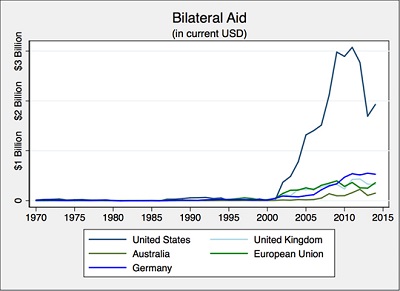
Figure 2: Bilateral Aid to Afghanistan in Current USD
Source: Development Assistance Committee of the Organisation for Economic Co-operation and Development, Geographical Distribution of Financial Flows to Developing Countries, Development Co-operation Report, and International Development Statistics database.
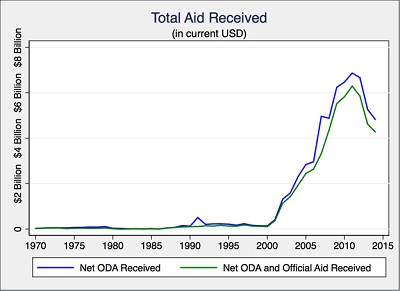
Figure 3: Total Aid to Afghanistan in Current USD
Source: Development Assistance Committee of the Organisation for Economic Co-operation and Development, Geographical Distribution of Financial Flows to Developing Countries, Development Co-operation Report, and International Development Statistics database.
USAID is a measure of net bilateral assistance provided to Afghanistan on behalf of the United States. According to the official website, USAID “is the lead U.S. Government agency that works to end extreme global poverty and enable resilient, democratic societies to realize their potential” (USAID, 2015). Data was collected from the Development Assistance Committee of the Organisation for Economic Co-operation and Development, Geographical Distribution of Financial Flows to Developing Countries, Development Co-operation Report, and International Development Statistics database and is shown in current U.S. dollars. I expect that the GROSS ENROLLMENT rises as USAID rises.
Control Variables:
BATTLE-RELATED DEATHS is the number of deaths due to conflict within Afghanistan, either at the hands of foreign troops or terrorist attacks from groups like the Taliban. The data was made available through the Uppsala Conflict Data Program and is displayed in raw numbers. It is my expectation that BATTLE-RELATED DEATHS has a negative impact on GROSS ENROLLMENT.
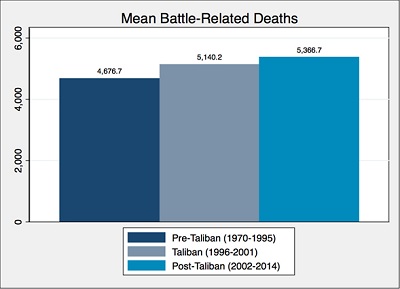
Figure 4: Mean Battle-Related Deaths
Source: Uppsala Conflict Data Program
ARMED FORCES measures the total number of armed forces that were deployed in Afghanistan during any given year. This number includes Afghan troops as well as all other foreign troops and the data was gathered from the International Institute for Strategic Studies, Military Balance. Similarly, US TROOPS is a measure of the total number of American forces to Afghanistan. It should be noted that American troops were not deployed to Afghanistan until after the September 11 attacks, so the number prior to late-2001 reflects the zero American troops present.
I use POPULATION as a control variable because it is theoretically logical to expect a rise in TOTAL if there is also a rise in POPULATION. The POPULATION of a country is indicative of the number of people enrolled in school. Data was collected from the United Nations Population Division.
GDP PER CAPITA is a good indicator of economic prosperity within a country and it is my belief that the better the economy of a country, the more females will be enrolled in school. This data was available through the World Bank national accounts data, and OECD National Accounts data files.
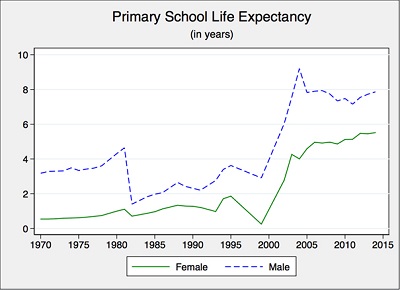
Figure 5: Primary School Life Expectancy
Source: UNESCO Institute for Statistics
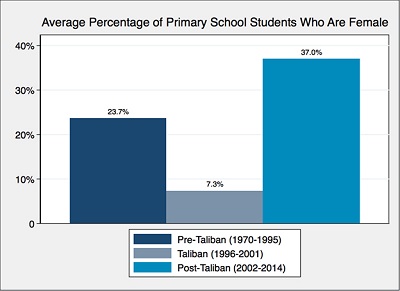
Figure 6: Average Percentage of Primary School Students Who Are Female
Source: UNESCO Institute for Statistics
Data Limitations
Due to female education being banned during the Taliban regime between 1996 and 2002, data is not available for this period. While the punishment for women attending school during this time often cost them their lives, it is still believed that a handful of women were still being educated during this time. However, as one could assume, data collection and maintenance was not a top priority of this oppressive regime and data during this six-year period is not included in this study. Similarly, during the 1980s when Afghanistan was experiencing widespread civil war, many years in this decade are missing data. Though the missing data is not ideal for this kind of study, I argue that studies like this are not only still capable of producing results, but are imperative to understanding the development of education in states like Afghanistan.
Findings
In order to successfully test whether foreign involvement in Afghanistan has had a positive impact on the gross enrollment ratio of females enrolled in primary and secondary school, I had to separate my research into two time frames: pre-Taliban and post-Taliban. Before the Taliban regime took full control of the Afghanistan government in 1996, the education of girls was not only legal, but it was encouraged through a series of government-implemented programs. However, during the Taliban regime from 1996 to 2002, female education was made illegal and the progress Afghanistan had made over the 20th century was lost. I divided all of the data I collected into these two time frames and ran a series of descriptive statistics to compare (see Tables 1 and 2).
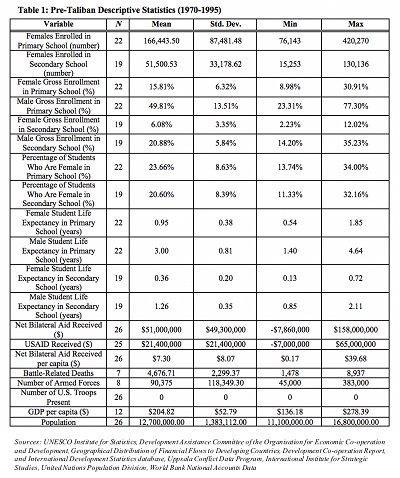
Table 1: Pre-Taliban Descriptive Statistics (1970-1995)
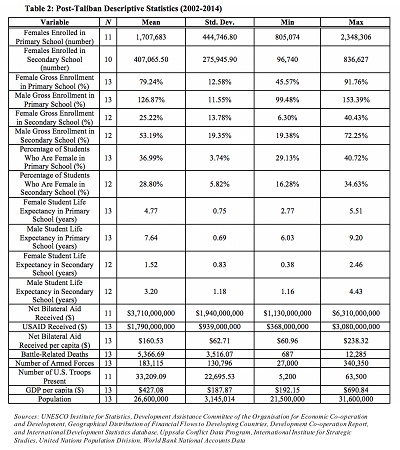
Table 2: Post-Taliban Descriptive Statistics (2002-2014)
I test whether total aid and USAID have an impact on the number of females enrolled in primary and secondary schools in Afghanistan. First, I run descriptive statistics to test whether there is a significant difference between means in pre- and post-Taliban Afghanistan. By using descriptive statistics, I can see whether there were more girls enrolled in school before or after the Taliban came to power. Descriptive statistics are reported in Tables 1 and 2.
In Tables 1 and 2 above, I show descriptive statistics of a number of variables pre- and post-Taliban to show the difference. The mean of the girls enrolled in school pre-1996 was 212,998.8 while the mean post-2001 increased to 2,205,010. Also of importance is the mean pre-Taliban of total aid given to Afghanistan at $51 million, which is in current U.S. dollars, while the mean post-Taliban is at a staggering $3.71 trillion. The money provided to Afghanistan by the United States pre-Taliban had a mean of $21.4 million, while the mean post-Taliban $1.79 trillion. The government’s expenditure as a percentage of their overall gross domestic product (GDP) has risen from 1.53 percent pre-Taliban to 3.91 percent post-Taliban.
After running descriptive statistics, I move on to measure the Pearson Correlation between each of the independent variables and the dependent variable. I chose to look at the Pearson correlation so that I could measure the strength of the linear relationship between the number of females enrolled in school and each of the independent variables. I test the statistical significance of my independent variables on my dependent variable by running several paired t-tests.
A paired-samples t-test was conducted to compare the relationship between TOTAL and all the independent variables. The results of these paired-sample t-tests can be viewed below in Table 3. Using TOTAL as my dependent variable, the results that were turned up when I ran the t-test with total aid suggest that there is a significant relationship between the two. Specifically, my results suggest that as the amount of aid provided to Afghanistan by the international community rises, so, too, does the total number of females enrolled in primary and secondary school. Using a log of the total aid, my results turn up a t-value of -21.56 with high significance, which confirms my hypothesis that the total number of girls enrolled increases with an increase in multilateral aid. The mean of the t-test of total aid is -6.07 with a standard deviation of 1.46. Comparable to the total aid, the mean of the USAID in the t-test result is -5.51 with a standard deviation of 1.27 and a t-value of -21.66. The t-value of the battle-related casualties is 18.46 with a mean of 5.89 and a standard deviation of 1.24. I used a log variable for population, which turned up a mean of -3.65, a standard deviation of 0.89, and a t-value of -22.49 in the t-test results. Finally, using a log of GDP, a mean of -9.11, a standard deviation of 0.72, and a t-value of -56.78 are the results of the paired-samples t-tests that I ran.

Table 3: Correlations
In Table 1 and 2 above, I show descriptive statistics of several variables pre- and post-Taliban to show the difference. The mean of the girls enrolled in primary school pre-1996 was 166,443.50 while the mean post-2001 increased to 1,707,683. Also, of importance is the mean pre-Taliban of total aid given to Afghanistan at $51 million or $7.30 per capita, which is in current U.S. dollars, while the mean post-Taliban is at a staggering $3.71 trillion, or $160.53. The money provided to Afghanistan by the United States pre-Taliban had a mean of $21.4 million, while the mean post-Taliban $1.79 trillion. The government’s expenditure as a percentage of their overall gross domestic product (GDP) has risen from 1.53 percent pre-Taliban to 3.91 percent post-Taliban. In Table 1, I show the results of the Gender Parity Index (GPI), which is a socioeconomic index designed by the United Nations to measure the access that males and females have to education. GPI is expressed as a percentage between 0 and 100 percent, with Afghanistan having a GPI of 29.3 percent pre-Taliban and 40.6 post-Taliban, a steady improvement.
In Table 3, I show the correlations between total aid, USAID, battle-related casualties, population, and GDP in relation to the total number of females enrolled in school. All of the results were positive and statistically significant, except for the battle-related casualties, with results that are positive but not significant. My hypothesis that as battle-related casualties increase, the number of females enrolled in school decreases is questioned, and the only possible explanation I have for this is that as the number of deaths during battle increases, it suggests a presence of foreign troops. With foreign troops in the region, females feel safer and are more likely to make the journey to and from school if they feel more secure.
My findings confirm all of my hypotheses except for the battle-related deaths, which shows an insignificant positive relationship when paired with TOTAL. I suspect this is the case because the presence of battle-related casualties suggests the presence of foreign troops in the region and girls feel safer attending school when there are troops present.

Table 4: Means Comparison
Conclusion
Going into this research, I wanted to examine the impact of the United States-led invasion of Afghanistan in 2001 to obliterate al-Qaeda and take out its leader, Osama bin Laden, on the number of girls enrolled in primary and secondary school. Previous studies have indicated a decline in the quality of education for females in Afghanistan after the United States intervened, but my research departs from this by taking a quantitative approach. When looking at the number of females enrolled in school before the Taliban gained total control of the nation in 1996, the number of females was significantly less than the number of females enrolled in school after the United States became involved in 2001. My research does not look at the quality of education like existing research does; I did not interview Afghan women. When looking at the numbers alone, it is clear that the number of females enrolled in school has increased dramatically over the last 15 years, and that is something that existing literature fails to acknowledge.
Although the international community is quick to wag its finger at the intervention of Afghanistan at the hands of the United States and other NATO forces, there is something positive that has been a result: an increase in the number of females enrolled in primary and secondary schools across the nation. My findings indicate that female education enrollment rates in the post-Taliban period, or after the United States intervened, are significantly higher than the rates in the pre-Taliban period. While infrastructural damage and civilian lives were pertinent in the region, there was, and continues to be, a rebuilding and reconstruction stage in Afghanistan with the help of international donors, which I measure through total aid and with the specific help of USAID. Prior to 2001, the Taliban were in complete control of Afghanistan and the education of females was forbidden and there were dire consequences if anyone disobeyed these laws. When foreign forces entered Afghanistan and toppled the Taliban regime, the education of females was not only allowed again, but encouraged at great lengths.
While Afghanistan continues to be at the bottom of nearly all gender equality-related indexes, when comparing pre- and post-Taliban, it’s clear that Afghanistan has come a long way. More rebuilding and reconstruction is needed in the nation and the threat of the Taliban still looms with attacks on schools, girls traveling to and from school, and I believe this can be attained by providing protection and security through a better Afghan police force. Crime still continues to be an issue in the region, but this can be handled with a better police force.
My conjecture that female enrollment rates in schools have increased due to the increase in aid given to Afghanistan is not such a black-and-white issue. While in comparison to the enrollment rates of females pre-Taliban, the enrollment rates of today are significantly higher, this can be witnessed by just looking at the descriptive statistics in Table 3, this does not mean that I believe female education in Afghanistan is doing well. Afghanistan still possesses one of the worst education systems in the world and the country has experienced decades of conflict and turmoil that cannot be overcome in a short amount of time. My diagnosis is simply that aid given to Afghanistan has certainly had a positive impact on female enrollment rates, however, there is much work that needs be done. More foreign aid should be provided to Afghanistan and policy changes are necessary to project female education forward. It is not my professional opinion that female education in Afghanistan is great, it’s far from that, but it is important to recognize that change does not occur instantly and that Afghanistan has made progress since the end of the Taliban regime in 2001.
So, while literature on this subject is largely critical of female education in Afghanistan and foreign forces’ role in it, there is no denying that there are more females enrolled in schools in Afghanistan right now that at any previous time since 1970. A more efficient police force that can provide basic security is necessary to increase the enrollment rates of females further and to propel it. With the United States pulling out forces and only leaving behind a small, residual one means the international community’s funding is slowing, but aid to Afghanistan is important now more than ever as this is a transformative period for the nation. Warlords continue to hold presence in areas of Afghanistan, but these isolated incidents can be controlled with a trained and capable Afghan military. Afghanistan is standing at a pivotal time in its history, one in which all of humanity may be able to look back and regard it as the years in which Afghanistan changed its entire future for the better, but that can only be the case if the necessary changes are made.
References
A Woman Among Warlords: Women's Rights in the Taliban and Post-Taliban Eras. (2007). Retrieved December 11, 2014, from http://www.pbs.org/wnet/wideangle/episodes/a-woman-among-warlords/womens-rights-in-the-taliban-and-post-taliban-eras/66/
Alvi-Aziz, H. (2008). A Progress Report on Women's Education in Post-Taliban Afghanistan
. International Journal of Lifelong Education, 27(2), 169-178.
Alvi-Aziz, H. (2003). Reconstruction in Post-Taliban Afghanistan: Women and Education. Resources for Feminist Research, 30(3/4), 13-37.
Benjamin, H. (2011, Spring). Education in Afghanistan. Notes and Abstracts in American and International Education, (111), 5+. Retrieved from http://0-go.galegroup.com.catalog.lib.cmich.edu/ps/i.do?id=GALE%7CA259680530&v=2.1&u=lom_cmichu&it=r&p=AONE&sw=w&asid=16c80340ae894226679643d3a682f143
Cartalucci, T. (2014, December 17). Grisly Peshawar Slaughter – Who Created Taliban, Who Still Funds Them? Retrieved from http://www.globalresearch.ca/grisly-peshawar-slaughter-who-created-taliban-who-still-funds-them/5420182
Centner, A. (2012). Implementing International Anti-Corruption Standards to Improve Afghanistan's Education System. Case Western Reserve Journal of International Law,44(3), 847-874.
Central Intelligence Agency (2015). Afghanistan. The World Factbook. Retrieved from https://www.cia.gov/library/publications/the-world-factbook/geos/af.html
Coursen-Neff, Z. (2006). The Taliban’s War on Education: Schoolgirls are still Under Fire in Afghanistan. Available online at: https://www.hrw.org/news/2006/07/31/talibans-war-education-schoolgirls-are-still-under-fire-afghanistan.
Deo, N. (2014). The politics of education in Afghanistan. Pakistan Journal of Women's Studies: Alam-e-Niswan, 21(1), 1+. Retrieved from http://0-go.galegroup.com.catalog.lib.cmich.edu/ps/i.do?id=GALE%7CA379981681&v=2.1&u=lom_cmichu&it=r&p=AONE&sw=w&asid=d8ef7d22c1733cd6c36a1e4ee5bbdce7
Education and the Developing World: Why Is Education Essential for Development? (n.d.). Retrieved from http://www.cgdev.org/files/2844_file_EDUCATON1.pdf
Farhoumand-Sims, C. (2007). Unfulfilled Promises: Women and Peace in Post-Taliban Afghanistan. International Journal, 62(3), 642-663.
Haidari, M. (2011). Education in Afghanistan. Journal of International Peace Operations,7(3), 35-36.
Human Development Reports. (n.d.). Retrieved December 1, 2014, from http://hdr.undp.org/en/content/table-4-gender-inequality-index
International Crisis Group, No. 56, Afghanistan’s Flawed Constitutional Process. (2003). Available at: http://www.crisisgroup.org/~/media/Files/asia/south-asia/afghanistan/056%20Afghanistans%20Flawed%20Constitutional%20Process.ashx
Islam, R. (2007). Education in Afghanistan: A Requirement for Assuring Security and Development. DIAS - Analysis, (21), 1-13.
Kissane, C. (2012). The Way Forward for Girls' Education in Afghanistan. Journal of International Women's Studies, 13(4), 10-28.
Moghadam, V. (1992). Patriarchy and the Politics of Gender in Modernising Societies: Iran, Pakistan and Afghanistan. International Sociology, 7(1), 35-53.
Mortsenson, G. (2010). Stones Into Schools: Promoting Peace with Education in Afghanistan and Pakistan. Penguin Books.
Osborn, C., Dalton, M., Ruby, J., & Young, A. (2003). Afghanistan: Education for Girls. Off Our Backs, 33(11/12), 5-5.
Pourzand, N. (1999). The Problematic of Female Education, Ethnicity and National Identity in Afghanistan (1920-1999). Social Analysis: The International Journal of Social and Cultural Practice, 43(1), 73-82.
Roshan, B. (2004). The More Things Change, the More They Stay the Same: The Plight of Afghan Women Two Years After the Overthrow of the Taliban. Berkeley Journal of Gender, Law & Justice, 19(1), 270-286.
Samady, S. (2001). Education and Afghan Society in the Twentieth Century. United Nations Educational, Scientific and Cultural Organization.
Samady, S. (2001). Modern Education in Afghanistan. Prospects, 31(4), 587-602.
Shirazi, R. (2008). Islamic Education in Afghanistan: Revisiting the United States' Role.The New Centennial Review, 8(1), 211-233.
Tanner, S. (2003). Afghanistan: A Military History From Alexander the Great to the Fall of the Taliban (p. 351). Oxford University Press.
Yazdi, H. (2008). Education and Literacy in Afghanistan: Lessons of History and Prospects for Change. The Monitor, 1(14), 38-50.
End Notes
[ii] DAC members are Australia, Austria, Belgium, Canada, Czech Republic, Denmark, Finland, France, Germany, Greece, Iceland, Ireland, Italy, Japan, Republic of Korea, Luxembourg, Netherlands, New Zealand, Norway, Poland, Portugal, Slovak Republic, Slovenia, Spain, Sweden, Switzerland, United Kingdom, United States, and European Union Institutions.
About the Author(s)
Comments
custom motorcycle patches …
custom motorcycle patches made into a motorcycle shape or patterns suitable for racing suit, motorcycle suit, cycling suit and other team clothes with.
The Top Facts publish the…
The Top Facts publish the most interesting top facts from various fields. Brush up your knowledge with these fascinating facts around the world. Here you can read articles on News, Business, Technology, Science & Nature, World & History and many more.
Good but sad article. I hope…
Good but sad article. I hope that in time more and more children will be able to get a quality education both in Afghanistan and in the world. I study in college, but I'm not always happy with the learning process. Sometimes I get assigned to write essays on topics that don't interest me. I use https://edusson.com/ to write quality essays with the help of professional writers. My friend recommended this service to me and I am very glad that I was not afraid to use it.
Capcut for pc is a free all…
Capcut for pc is a free all-in-one video editing app that helps you create incredible videos especially designed for people who loves to make YouTube videos. This application is packed with amazing features that allows you to do professional level editing.
Overall region was disturbed…
Overall region was disturbed due to afghan war, I think education is the basic right for all girls and women around the world. It has to be free for all in Asian countries. visit
i read your post, i think…
i read your post, i think this is the best article .Try this Plastic Strainer
A beautifully designed…
A beautifully designed Kinetic Desktop Spinner
Concentrate more effectively, make your mind relaxing or soothing, present & calm
Stopwatch timer is a device…
Stopwatch timer is a device for indicating or measuring elapsed time, as a stopwatch. a device for controlling machinery, appliances, or the like, in a specified way at a predetermined time.
if you want make digital…
if you want make digital stopwatch so check this and try to make a digital
i hope you use timer for…
i hope you use timer for manage time and etc like boil eggs and more so first of all you need to read about timer
Sports News is the best…
Sports News is the best website for sports . If you are interested in sports then visit this site
Technological News is a best…
Technological News is a best platform if you want to know any new update about technology.
Thanks for sharing. very…
Thanks for sharing. very informative and attractive article.
See Multiple Stopwatch and much more
Try this LED flashlight app …
Try this LED flashlight app
https://play.google.com/store/apps/details?id=com.zonalapps.ledflashlight.torchlight
Status Saver is the best app…
Status Saver is the best app for saving whatsapp image and status vidio.
Timer is best for manage…
Timer is best for manage time and how to be a good timer and learn about it. if you want to learn about then click it.
